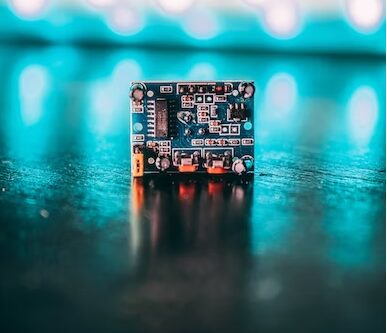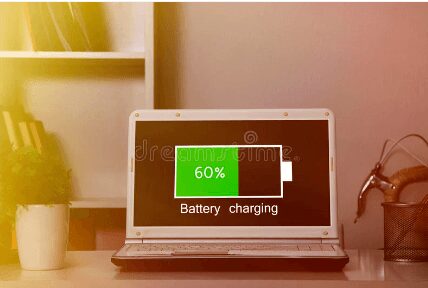Tex9.net computer chip: A World of Benefits and Versatility

In today’s fast-paced world, the demand for high-performance computing has never been greater. From smartphones to data centres, computers are at the heart of almost every aspect of our lives. As technology advances rapidly, so does the need for faster and more efficient computer chips.
Enter the Tex9.Net computer chip, a revolutionary piece of technology poised to transform the computing landscape as we know it. This article will explore the Tex9.Net computer chip, how it works, its benefits, and the potential implications of this breakthrough technology.
What is Tex9.Net Computer Chip?
The Tex9.Net computer chip is a cutting-edge semiconductor chip that promises to revolutionize computing with its unique architecture and design. Developed by a team of researchers at Tex9 Technologies, a leading technology company specializing in advanced semiconductor solutions, the Tex9.Net chip represents a significant leap forward in computing technology.

The Tex9.Net chip is designed to be highly scalable, energy-efficient, and capable of processing vast amounts of data at lightning-fast speeds. It features a unique combination of hardware and software optimizations that enable it to perform a wide range of computing tasks with exceptional efficiency. The chip is also highly flexible, allowing it to be easily integrated into various computing systems, from mobile devices to data centres.
See this on Amazon. Fantom Drives 18TB External Hard Drive HDD
How Does Tex9.Net Computer Chip Work?
At the heart of the Tex9.Net computer chip is its revolutionary architecture based on a new paradigm called “neuromorphic computing.” Neuromorphic computing is inspired by the structure and function of the human brain and aims to replicate its capabilities in silicon-based chips. Unlike traditional computer chips based on the von Neumann architecture, the Tex9.Net chip employs a distributed architecture that allows for parallel processing and efficient data flow.
The Tex9.Net chip comprises multiple processing units, or “neurons,” that work in parallel to process information. These neurons are interconnected in a way that mimics the neural networks in the human brain, allowing for the efficient processing of large amounts of data. The chip also includes built-in memory, eliminating the need for separate memory components and reducing data movement overhead.
One of the critical features of the Tex9.Net computer chip is its ability to learn and adapt to changing tasks and environments. This is achieved through “spiking neural networks,” which allow the chip to continuously update its synaptic connections based on incoming data. This enables the chip to optimize its performance over time, improving efficiency and accuracy in computing tasks.
The Tex9.Net chip also utilizes advanced power management techniques, including dynamic voltage and frequency scaling, to optimize energy efficiency. This makes it an ideal choice for applications that require low power consumption, such as mobile devices and Internet of Things (IoT) devices.
See this on Amazon. 8200 DiabloSport inTune i3
Potential Implications of Tex9.Net Computer Chip:
Tex9.Net Computer chip could revolutionize computing in several key areas.
Artificial Intelligence (AI):
The ability of the Tex9.Net chip to process large amounts of data in parallel and adapt to changing tasks and environments makes it an ideal candidate for AI applications. From machine learning to computer vision, the Tex9.Net chip could significantly enhance the capabilities of AI systems, leading to breakthroughs in areas such as autonomous vehicles, medical diagnosis, and natural language processing.

Edge Computing:
Edge computing refers to processing data closer to the source of data generation rather than sending all data to centralized data centres for processing. The Tex9.Net chip’s low power consumption and high processing capabilities make it well-suited for edge computing applications, where efficient data processing and low latency are critical.
Tex9.Net Computer Chip could enable development of advanced edge computing systems for applications such as the Internet of Things (IoT), smart cities, and industrial automation, where real-time data processing and decision-making are essential.
High-Performance Computing (HPC):
The Tex9.Net chip’s ability to handle massive amounts of data and perform complex computations in parallel could greatly enhance high-performance computing applications. This includes scientific research, weather modelling, financial simulations, and drug discovery, where large-scale data processing and computational power are crucial for achieving accurate and timely results.
The Tex9.Net chip’s advanced capabilities could enable breakthroughs in these fields, leading to advancements in various scientific, economic, and social domains.
Data Centers:
The Tex9.Net chip’s high processing capabilities and low power consumption could significantly impact the design and operation of data centres. With its ability to handle large-scale data processing efficiently, the Tex9.Net chip could enable the development of more energy-efficient and cost-effective data centres.
This could lead to reduced energy consumption, lower operational costs, and increased scalability of data centres, which are critical for managing the exponential growth of data in today’s digital world.
Security:
The Tex9.Net chip’s potential for parallel processing and adaptability could also have implications for cybersecurity. Its ability to analyze large amounts of data in real-time could enhance threat detection and response capabilities, improving the security posture of various systems and networks.
Additionally, the Tex9.Net chip’s low power consumption could enable the development of energy-efficient security solutions for resource-constrained environments, such as IoT devices and edge computing systems.
Economic Impact:
The widespread adoption of the Tex9.Net chip could also have significant economic implications. It could drive innovation and create new opportunities in industries such as AI, edge computing, HPC, and data centre operations, leading to economic growth and job creation.
Moreover, the Tex9.Net chip’s potential for energy-efficient computing could also contribute to sustainability efforts by reducing energy consumption in data centres and other computing environments, resulting in cost savings and environmental benefits.
See this on Amazon. Hypertech 3000 Max Energy Spectrum Power Programmer
Benefits of Tex9.Net Computer Chip

Tex9.Net is a computer chip that offers several benefits for various applications. Here are some of the potential advantages:
Improved Performance:
These chips are designed to deliver high performance and processing capabilities. They are optimized for data processing, artificial intelligence (AI), machine learning, and other compute-intensive applications. This can result in faster processing and response times and improved system performance.
Energy Efficiency:
Tex9.Net chips are designed to be energy-efficient, which means they consume less power while still delivering high performance. This can result in lower power consumption, reduced heat generation, and longer battery life for Tex9.Net chips, making them ideal for mobile devices, Internet of Things (IoT) devices, and other energy-conscious applications.
Scalability:
Tex9.Net chips are designed to be scalable, which means they can be used in a wide range of applications, from small embedded systems to large data centres. This flexibility allows easy integration into different devices and systems, making them versatile and adaptable to various computing requirements.
Security Features:
Tex9.Net chips have built-in security features such as encryption, secure boot, and secure execution environments, which help protect against unauthorized access, data breaches, and other cybersecurity threats. This makes Tex9.Net chips suitable for applications where data security and privacy are crucial, such as financial transactions, medical devices, and connected devices.
Future-Proofing:
Tex9.Net chips are designed to be future-proof, meaning they are built with advanced technologies and architectures that can handle evolving computing requirements. This ensures that Tex9.Net flakes can continue to deliver high performance and efficiency even as technology advances and new computing demands emerge.
Cost-Effectiveness:
Tex9.Net chips offer a cost-effective solution for various applications. Their performance, energy efficiency, scalability, security features, and future-proofing can result in cost savings over time, such as lower operating costs, reduced energy consumption, and longer device lifespan.
These chips offer several benefits, including improved performance, energy efficiency, scalability, security features, future-proofing, and cost-effectiveness, making them suitable for various computing applications.
See this on Amazon. ACCEL 49505 SuperTuner – Handheld Computer Programmer
Conclusion!
In conclusion, the Tex9.Net computer chip has the potential to revolutionize computing in several key areas, including AI, edge computing, HPC, data centres, security, and economic impact. Its advanced capabilities in processing large amounts of data in parallel and adapting to changing tasks and environments could lead to breakthroughs in various domains, transforming industries and driving innovation.
However, it is essential to consider the ethical, social, and regulatory implications of the Tex9.Net chip’s deployment to ensure this technology’s responsible and beneficial use.
FAQs!
u003cstrongu003eWhich chip is used in computers?u003c/strongu003e
In computers, a variety of chips are used for different purposes. One common computer chip type is the Central Processing Unit (CPU), a microprocessor. The CPU chip executes instructions and performs calculations in a computer system.
u003cstrongu003eWhat are the two types of computer chips?u003c/strongu003e
The two types of computer chips are:u003cbru003eu003cstrongu003eCentral Processing Unit (CPU) chips:u003c/strongu003e These chips are also known as microprocessors and are responsible for executing instructions and performing calculations in a computer. The CPU is often called the u0022brainu0022 of the computer as it controls and coordinates all computer system operations.u003cbru003eu003cstrongu003eGraphics Processing Unit (GPU) u003c/strongu003echips are designed to render graphics and images on a computer screen. GPUs are commonly used in u003ca href=u0022https://laptopsjet.com/best-laptop-for-multiple-monitors/u0022 target=u0022_blanku0022 rel=u0022noreferrer noopeneru0022u003egaming computersu003c/au003e, graphic design workstations, and other applications that require high-quality graphics processing. GPUs are optimized for parallel processing, making them capable of efficiently handling complex graphics rendering tasks.
u003cstrongu003eHow are transistors put on a chip?u003c/strongu003e
Transistors, electronic components that can act as switches or amplifiers, are typically put on a chip using semiconductor fabrication or semiconductor manufacturing. This process involves creating a pattern of transistors on a semiconductor material, such as silicon, using techniques such as photolithography and etching. These transistors are then interconnected using conductive traces to create the desired circuitry on the chip.
u003cstrongu003eWhat are the uses of a microchip?u003c/strongu003e
Microchips, also known as integrated circuits or simply u0022chips,u0022 have many uses beyond computers. They are used in various electronic devices, such as smartphones, tablets, smart TVs, u003ca href=u0022https://laptopsjet.com/best-laptop-for-emulators/u0022 target=u0022_blanku0022 rel=u0022noreferrer noopeneru0022u003egamingu003c/au003e consoles, and other consumer electronics.u003cbru003eMicrochips are also used in industrial applications, medical devices, automotive systems, aerospace technology, and many other fields. They provide compact, reliable, and efficient solutions for controlling and processing electronic signals. They have revolutionized modern technology and are integral to our daily lives.



